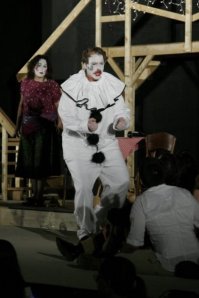Shared from my songwriting page – this is a year long project I am undertaking where I will be putting together a 12 song album together from contributions all over the world. Each month I will upload the vocals of an original song … then anyone who wants, anywhere in the world, can record what they think sounds cool as accompaniment or vocals and send their recording to me at songboy_s_c@yahoo.com.
If your contribution is used you will be given equal musical songwriting credit on the album!
Collaborative Composition: Musical Mosaics that span the globe
(press play on the SoundCloud link above)
It’s here! “Unconditional Love”, a Reggae song … and it’s all yours to listen to, work with and create the accompaniment for. Listen to it, groove to it … if you want to sing the lead vocals record yourself singing it and send it to me at songboy_s_c@yahoo.com.
I am NOT a Reggae singer … so this is a BIG opportunity for someone to do lead vocals for an awesome song. This song flowed out of me in a wave of inspiration … and I am simply singing what I heard in my head (so you’ll have to pardon the phony accent, I just heard it that way! lol) I am singing it here, but this is only to convey the words and melody … if you want to sing lead? Go for it!
The long bit of silence 2/3s of the way through is meant to be for vocalist improvisation with a choir in the background singing “Unconditional Love” in chords.
This is the second Musical Mosaic song project for this year-long Collaborative Composition song project.
Anyone, anywhere in the world, can play whatever instrument they want to the vocals … when you have what you want to record down, send it to me. If I use your idea/contribution you will be given equal musical songwriting credit on the album.
That means if this album goes big your name will be on it for both songwriting credit AND as a performer. Nothing is a guarantee in this world … but why not live a life of hope rather than one of resignation. Resignation eats away at your insides and makes you miserable … so BELIEVE and go for it! Live out of inspiration instead … you’ll be much happier! 😉
Here are the lyrics:
Unconditional Love
By: Christopher Anderson
Unconditional love
means never closing your heart
although it be torn apart
or ripped to pieces.
Unconditional love
as pure as a newborn kiss
and as long Ouroboros
but much more gentle.
What they can’t see
can be heard in the silence.
Where they may go
so it follows surely behind;
like the tendrils of passion
it climbs the edifice of their mind
to bloom and spread a fragrance
Unmistakable.
Unconditional love
collapses all space and time
with all souls intertwined
but barely moving.
Unconditional love
it pierces right through your heart
tears flow at the very art
of its magic.
(choir sings “Unconditional Love” in chords while soloist improvs)
It can’t be broken
Cannot be changed
Not dismantled
Or rearranged.
No more fighting
No more hate
No more vengeance
It all dissipates.
It’s unconditional.
Love.
* This song has an informal copyright for Christopher Anderson. If you want to use it outside of Collaborative Composition, you will need to come to an agreement with the songwriter.
– art by Chris Dyer.









